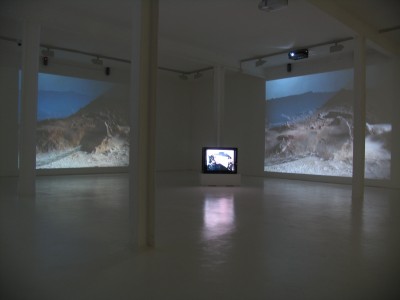The thing is that there are no 100 art projects available for a choice. The choice is made before. A network choice. Quality is already a fact before something is chosen.
If we take the example with Documenta 11. Okwui Enwezor is chosen as director of the exhibition. The winds of globalization and post-colonialism are blowing and Enwezor is a good opportunity: Social critique,
Africa and a black man. He brings in 6 co-curators whom he has been working together with before. The team is in itself a composition of the global world. Each of them will of course bring in artists who they have been working with or have a special interest in. Enwezor has a strong interest in promoting black and African artists and documentary films. He is also interested in political activism as art. Thus it becomes a strong quality in this connection to have such an identity. It also means that Documenta will show less well-known artists whose range of quality quickly will rise.
Almost every artist concerned with post-colonialism will address this issue indirectly. The rule of “not illustrating” is a strong one. That means that many artists are available. It is enough to have a working situation which reflects a post-colonialist aspect or that the artist himself is an example. And the team’s concept is also wide. One member of the team, Sarat Maharaj, has a strong interest in the concept of “translation”. Translation can in this connection be seen as “translation of one culture to another” and there it is. Maharaj himself is a perfect object for this period of post-colonialism being an Indian of origin, brought up in South Africa and professor in
London. He is also very intelligent and with an ability to lecture with a sense of poetic theory. Just listen to him here.
Enwezor and the curator team are of course concerned about making correct quality art and thus not forcing the exhibition to become an illustrated idea. This is not necessary as the only thing needed is works and artists which can be discussed in relation to the questions and the massive theoretical program which was the first parts of Documenta 11 (“four platforms”). A theme should not be overdone.
If we sum up the exhibition it will be confirming a quality which already was established. A few African artist and a few documentary filmmakers were rather new name in the context but also that is needed for an exhibition. We have the rule for curated shows that they should bring forward some “new blood” – but hardly too new.
The interesting thing when analyzing this – or any other exhibition – is that the quality was already established. The chosen ones were chosen because they had already been chosen. And those who are choosing were also chosen to make the correct choice for a certain quality present at that time.
It is then simple to put forward why something is high quality in art. The argument used will be that art deals with certain relevant topics and then again added: with newness, incomprehensibility, being poetic, good aesthetic and so forth.
It could be understood as if we have some, but a limited number of very good artists in the world. These artists are chosen because of their artistic qualities. But as we can see in Enwezor’s case; he is not satisfied. The African artists are not appreciated as they should be. So he picks some of these, hoping that this will change the situation. One can say that it really doesn’t. One curator, even with a magic power from such an exhibition as Documenta, cannot change a situation. The documentary filmmakers returned to documentary film after the exhibition and the new African artists and groups were mainly given a start. A promotion is a long track run.
But if some African artists might not be appreciated as they should – how about all other artists? Here we probably have the clue. The artworld could be full of artists who are treated in an unfair way. Or is there no such thing as being treated unfairly?
Next part will deal with this subject.


